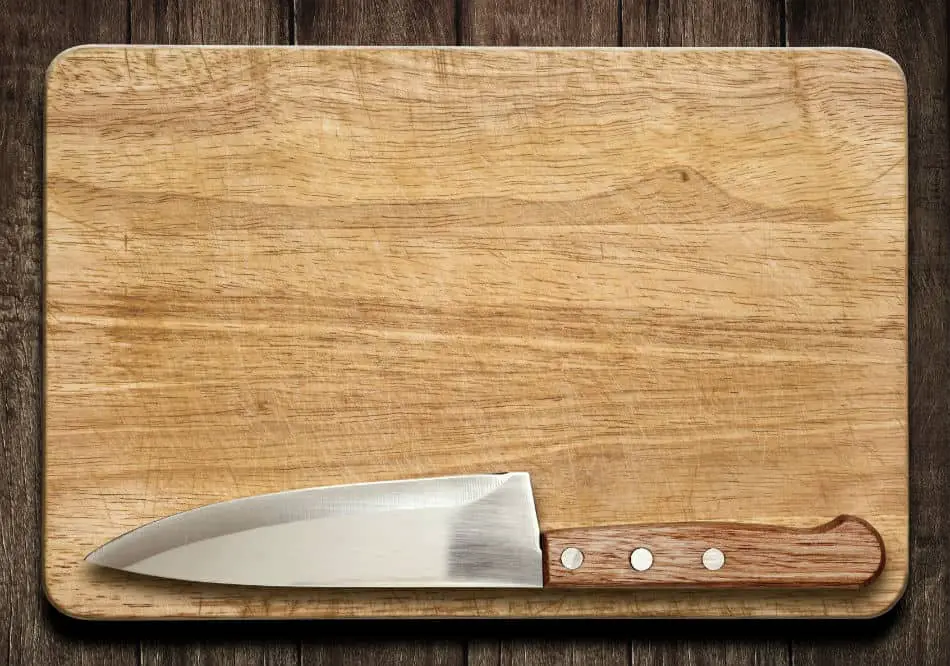This post contains affiliate links. As an Amazon Associate I earn from qualifying purchases
Cutting boards or chopping boards are the most used and abused kitchen tool. From preparation to serving, they play a significant role in providing a sturdy, safe, and sanitary spot for slicing, dicing, chopping, cutting, and butchering. Not all chopping boards are the same though, so it is essential to know what are cutting boards made out of.
There are several types of chopping boards: plastic, wood, bamboo, rubber and silicone, glass, and steel. Some chopping boards are a combination of these materials, while most of them are plain and solid.
When choosing what cutting boards to buy and use, it is important to know the priorities of the user. With a lot of brands and variants available on the market, making this seemingly simple decision would require retrospection.
Table of Contents
What Are the Factors Affecting Choice of Cutting Boards?
Several factors are affecting one’s choice of cutting boards, but the primary considerations of most cooks and chefs are the following:
- Durability: It is the ability of the chopping boards to withstand the workload for many years. It is also characterized by their ability to resist cuts and scrapes, as well as cracking and warping.
- Convenience: As for convenience, cooks are after the stability of the chopping board, which means they want something non-slip. Convenience also pertains to how hassle-free the cutting boards are to use, such as if they have juice grooves or are wide enough to cover most of their workspace.
- Sanitation and maintenance: These two work together, and cooks or chefs want something that is easy to clean, bacteria-resistant and odor-resistant. It is a plus if the cutting board is dishwasher safe.
- Eco-friendliness: This factor is based on the materials used in making the cutting board.
- Effects on the knives: For people who are really passionate about cooking, knives are not just something used to cut food, but are companions or a “right hand” in coming up with only the yummiest and enticing dishes. Hence, they want a chopping board that will not dull the blades of their favorite knives.
What Are Cutting Boards Made Out Of?
1. Plastic
Plastic could be the most common type of cutting board in households. They are also called polyethylene (PE) boards since they are usually made of high-density polyethylene plastic (HDPE). Plastic materials used on cutting boards need to pass certifications to ensure the safety of the users, so manufacturers need to be able to prove that the certain compound they used for their plastic cutting boards is safe to be in contact with food.
On another note, plastics are durable and do not dull blades of knives, but they can easily have deep cuts and scrapes. Bacteria easily live and multiply in those damaged spots that cannot be easily cleaned manually mainly because the naked eye does not see them. Nevertheless, plastic boards are low maintenance since most of them are dishwasher-safe and can be cleaned with strong bleach and other chemicals.
2. Wood
There are different kinds of woods used for wooden cutting boards. The best materials would be maple, teak, acacia, and any other solid slab of wood that is not too porous. That way, they do not absorb too much water; thus, avoiding bacterial infestation since these microorganisms love a wet and warm cutting board.
When choosing wood cutting boards, make sure to buy solid boards because some of the popular cutting boards are made of scrap or leftover woods at the mill that are put together using glue that sometimes has formaldehyde. Scrap woods turned into cutting boards are also prone to water absorption and bacterial infestation.
Otherwise, solid, less-porous woods have anti-bacterial and self-healing properties. They are also durable yet friendly on the knives. The only disadvantage of using wood cutting boards is that they are a bit high-maintenance since they need to be washed by hands and oiled to keep them looking and smelling clean.
3. Bamboo
Bamboo is a different category from wood since it is not actually a tree but a grass. Yes, that is right. Bamboo is the tallest and strongest kind of grass. They are easy to plant and grow, though harvesting them is a different story. Just like wooden cutting boards, they are attractive, durable, and eco-friendly.
Bamboo cutting boards are made of bamboo sticks pressed together, so make sure that the compound used in sticking them together is also non-toxic. Go for manufacturers that use natural plant resin adhesives as they are food-grade and eco-friendly.
4. Rubber and Silicone
Rubber was originally used as borders and base of plastic cutting boards. They prevent slippage and provide a feeling of stability for the user of plastic boards. However, in recent months, thick rubber pads started to be commercially sold since they are a combination of the qualities of wood and plastic like being knife-friendly and have self-healing properties.
Silicone cutting boards are almost the same as rubber boards but without the rubbery smell. Just like plastic cutting boards, these are low maintenance and durable. They are heat-resistant, so they can be put in the dishwasher, and are easy to disinfect using bleach and other chemicals.
5. Glass
Glass-type cutting boards are one of the least commonly used simply because they are the worst kind of board for everyone’s knives. There’s even a possibility of chipping the blades because of how hard the material is. Yes, glass boards are non-porous, easy to clean and maintain, but it is not worth the accidents they may cause.
6. Steel
Steel is the most commonly used material for kitchenware aside from plastic. However, they are better off used for pots and pans.
Just like glass, these boards could easily dull or even break knives, causing some accidents. They also share the advantages of glass cutting boards.
Summary
There is a lot of different kinds of cutting boards made of different materials namely plastic, wood, bamboo, rubber, silicone, glass, and steel. They all vary in terms of durability, convenience, sanitation, maintenance, eco-friendliness, and effects on the knife being used. Therefore, before buying a cutting board for your kitchen, ask what are cutting boards made out of and which of those factors are most important for you and your family.


